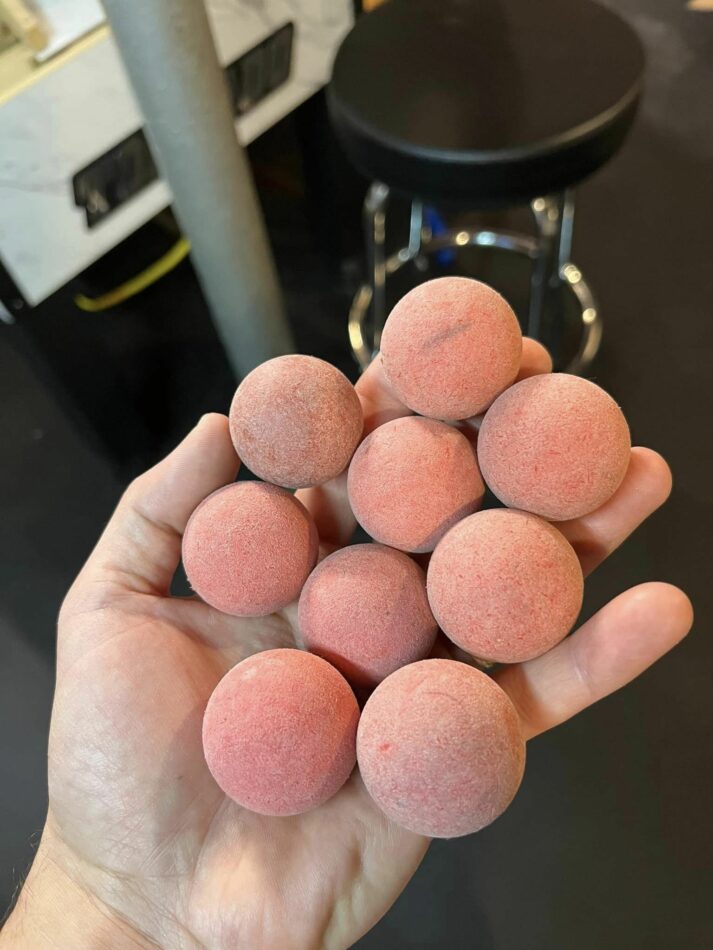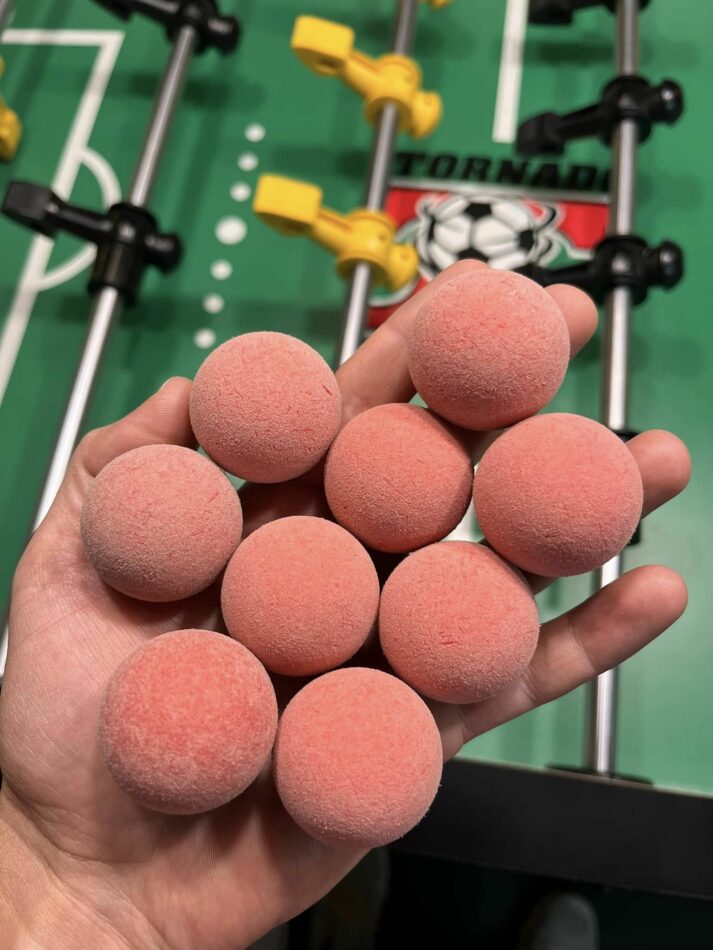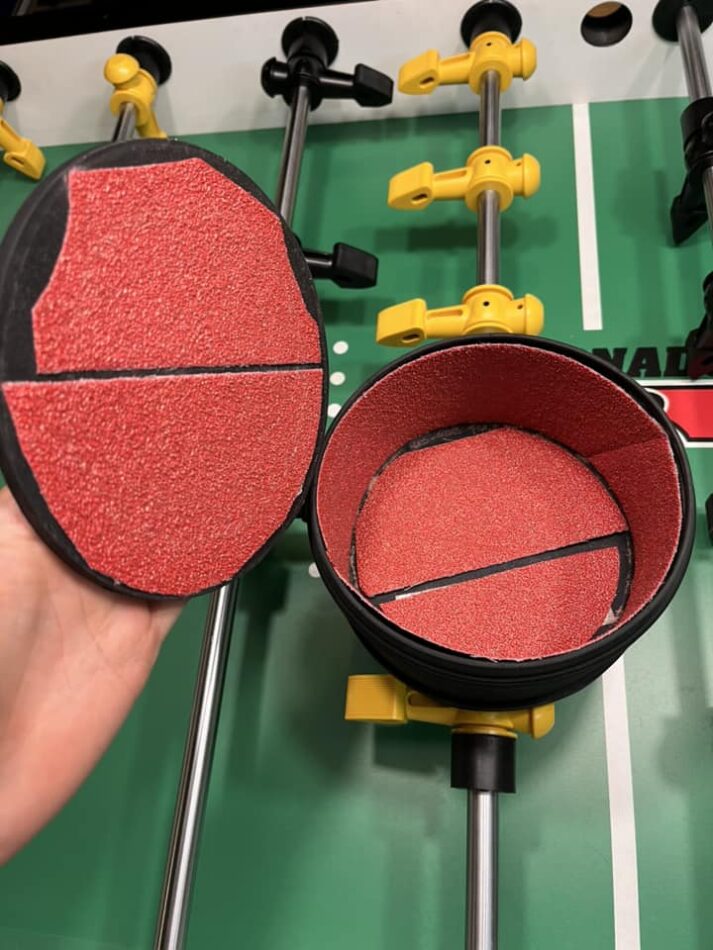New foosballs are expensive, but cleaning and restoring old balls is tricky. Over the next few weeks Bayfoos will publish a series of blog posts about how Boise FoosWorks compares with other techniques.
Foosballs are Expensive
Foosballs are expensive all over the world. As of March 2024, Bonzini tournament balls are $4, Bonzini cork is $3.50, and Leonhart Pro balls are a whopping $8 a piece. Tornado balls are $4 each right now, but are uniquely tricky because they have a fuzzy texture that picks up oil and dirt easily. As the fuzz wears down the way the balls move changes dramatically. Some players intentionally practice with smooth worn out balls to improve their control, but then switch to new balls before tournaments so they can adjust to the grippier texture. Different players have different thresholds before they consider a ball “worn out.” For some people, a Tornado ball with more than a few hours of play dramatically impacts their game, and they’ll purchase new balls just before big matches. Valley Dynamo even sells two different versions of the Tornado ball, Classic Pink vs Tournament Red, with slightly different playing characteristics.
Using new foosballs for every event is too expensive. For years players and tournament directors have traded notes on how to clean and refurbish used Tornado foosballs. The balls are hard plastic, and a gentle wash removes oil without destroying the fuzzy texture. Restoring the fuzz on a ball that is too smooth is trickier. Players have tried everything from sandpaper in a coffee can to rock tumblers to Bayfoos’ elaborate clothes dryer powered tumbler, but getting the fuzz right is tricky. The standard is to use new balls for major tournaments, but refurbished balls for smaller events.
Thomas Dyke graciously allowed us to use photos of his rock tumbler foosball refurbishing system.



Another look at refurbishing
2023 was a bad year for foosballs, and things reached a breaking point. First, the foosball parts supply chain suffered due to inflation and manufacturing problems. Prices shot up from $4 per ball to $6, and there was a several month stretch in 2023 where Valley Dynamo simply stopped selling new balls. Difficulty in sourcing new balls reignited interest in refurbishing techniques.
That led people to finally confront the major problems with refurbished balls: no one knows what “good” refurbished balls really means. Rumors abound about balls being smaller, or too grippy, or the wrong weight, or wearing out more quickly. How many foosballs can be refurbished in a single batch before the tumbler is too crowded? What sandpaper grit should be used? How long can the sandpaper be used before it’s too worn out to restore balls? How many times can a ball be refurbished before it is too small or the wrong weight?
There was no way to compare new balls to refurbished to understand the quality of the refurbished balls. People didn’t even agree about what to measure, much less have the equipment to measure it accurately.
Introducing Boise FoosWorks
Enter Michael Veit and Boise FoosWorks. Michael is a tournament foosball player from Idaho who also has experience with data-driven quality assurance processes. He started a multi-month journey to design and build a foosball measurement and refurbishment system. He made some surprising discoveries about Valley Dynamo’s own balls: even new balls have large differences between batches!
We’ve come a long way from sandpaper lined coffee cans. Michael has been gracious enough to share his findings with the foosball community. Over the next few weeks we’ll publish more blog posts about how Boise FoosWorks refurbishes Tornado foosballs.



